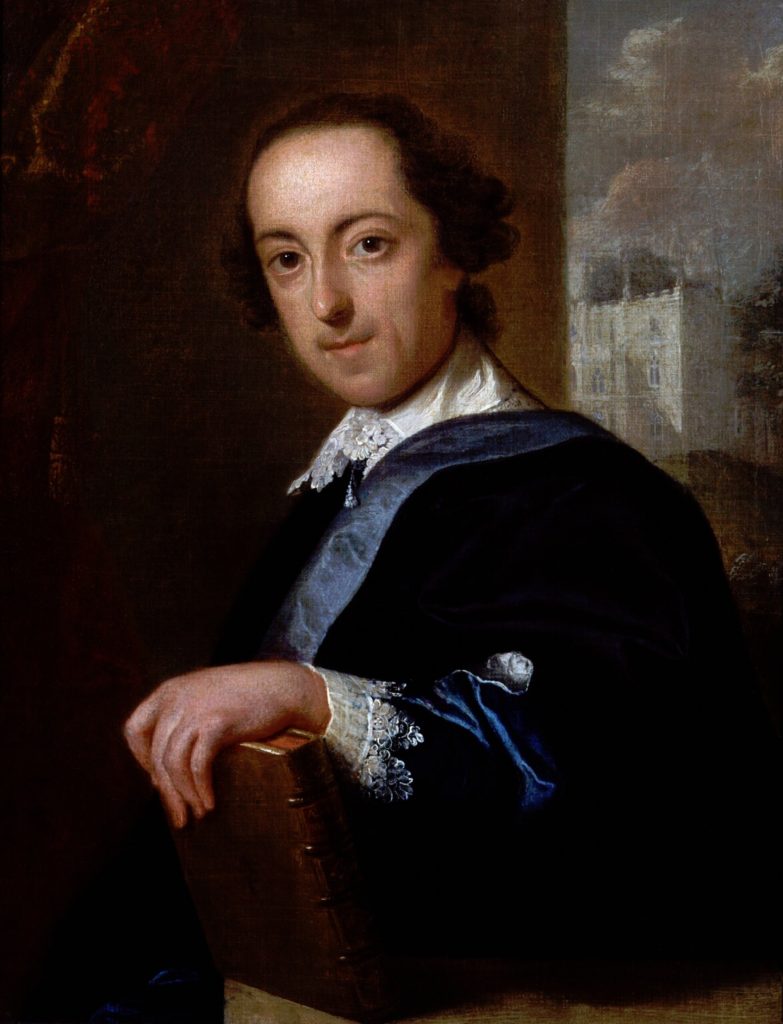Serendipity
09.07.2018
John Giles Eccardt (1720–1779) - portrait of Horace Walpole (1717-1797) vers 1754, National Portrait Gallery, Londres.
Collection 34 has entrusted itself to the patronage of chance because its curiosity shop of objects reveals unexpectedly joyous things. As this is the case, memento has decided to mull over the word serendipity, a common word that is not yet recognised by the Académie Française.
The word serendipity refers to an intellectual, often scientific discovery, resulting from a quest whose original aim was totally different from the one actually reached. Serendipity therefore refers to the happy chance that accidentally directs a quest towards an end result that was neither expected nor sought.
Happy coincidence or fortuitous chance are more or less the same thing but they nod to the result whereas serendipity focuses more on the research process or the initial quest for its unexpected and welcome result. This concept doesn’t just involve the part played by chance in the discovery but also to a mindset open to the unexpected. This openness of mind is equivalent to a heuristic style, a learned but rigorous term that exposes the logical stages involved in a search for knowledge, in exact sciences as well as in philosophy, starting from a hypothesis of departure on the exploration of a rational search by gradually eliminating any discordant alternatives. Serendipity induces a heuristic method in which failure means success. But this fortuitous success would often go unnoticed if the chance of being spotted happened in advance. Perhaps this is the difference between luck and likelihood: the latter is often coincidence that has been partly summoned, invited or even made propitious.
The origin of the word is well known: it was the great scholar, aesthete, man of letters and politician Horace Walpole (1717-1797) who used it in a letter to a friend with reference to a fairy tale of Persian origin called Travels and adventures of three Princes from Serendip. He had read this as a child courtesy of a French translation by Louis de Mailly. By prodding rational deductions from the brothers and protagonists, who appear to prefigure those of Sherlock Holmes with their shrewd observations allowing them to work out very clearly the very improbable causes resulting from what they seen, Walpole used the word Serendip (the name of a place, identified as possibly the island of Sri Lanka) to create the noun serendipity which he describes as “accident and sagacity whilst in pursuit of something else”, meaning the unintentional wisdom that comes about when looking for something other than that which is finally discovered.
The flourishing of neologism saw his definition picked up and used in the exact sciences as well as in sociology. It has, in some way, been theorised to justify the need when on a quest to leave some fields open, to look around and fritter away time by disassociating oneself from the main object of a search. Because the experience has indeed provided statistical evidence of many incidental discoveries over time. A few cases in point being Penicillin, dynamite and Viagra…
Naturally, it is becoming more prevalent in the arts and creative activities. Investigations that no longer require just understanding but the creative process as well are more easily nourished by the vagaries of matter as well as by the emulated mind. When interviewed, the artist Pierre Soulages explained that the intention precluding a piece of art was like “a prison bar” to him but it led him down a path that incorporated the unexpected and an element of derailment as if the canvas and the interaction between his hand and the art itself led him to a blind spot far beyond his original destination. This was actually only a way of reaching an unknown, impenetrable and unexpected destination: a work of art. In this instance we could advance the idea of a programmatic and provoked serendipity, of its voluntary instrumentation for effects that would become central to incidents themselves.
In any case, the original definition made seems to be the most exact: that of accidental sagacity. The accident is partly by chance, in this case the intervention of a rationale other than that which was originally pursued. But it requires wisdom, intellectual emulation, effort and the kind of preclusion that makes understanding difficult. Plunging your hand in your pocket to look for keys and pulling out a sweet that you didn’t know was there, for example, is not quite serendipity.

